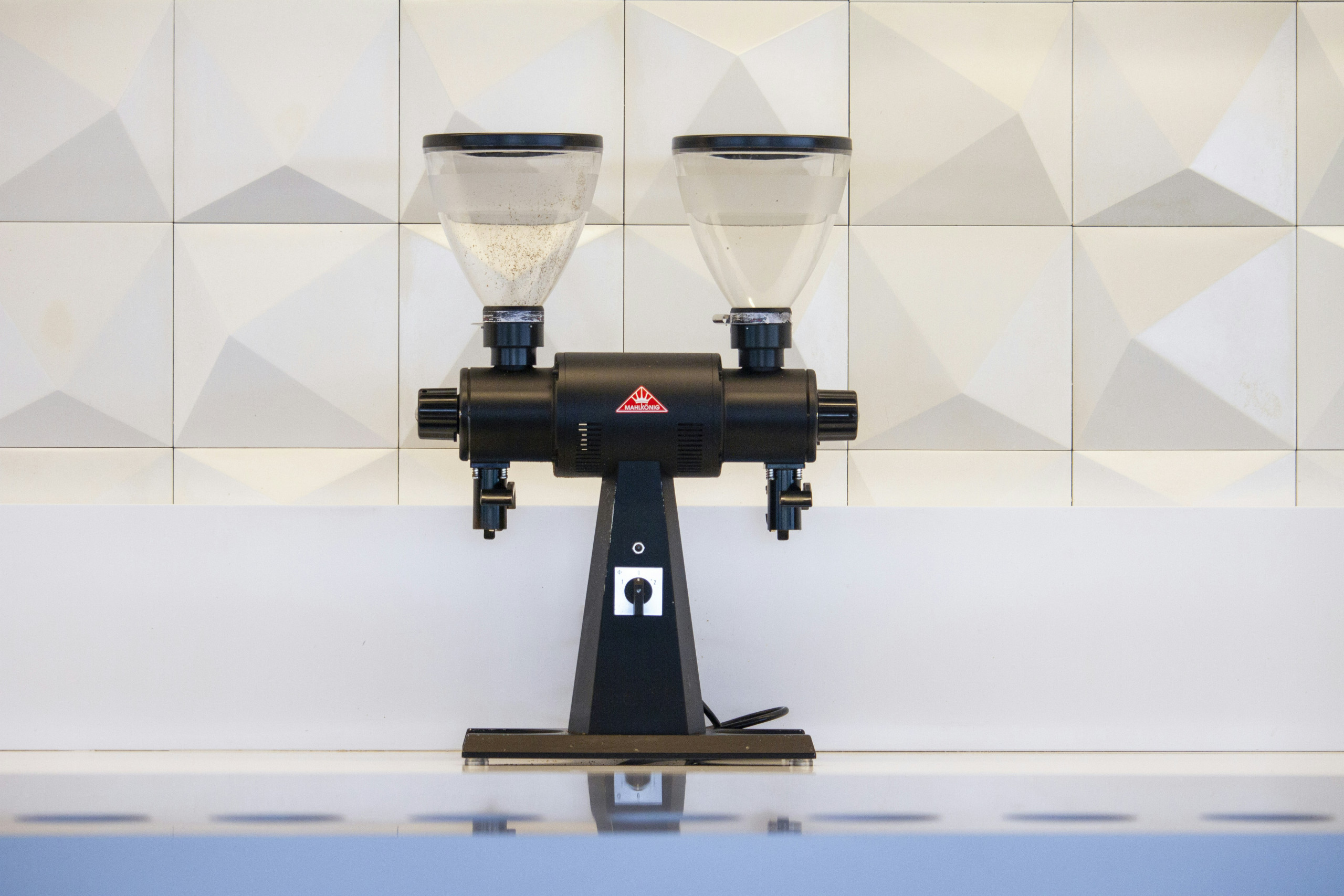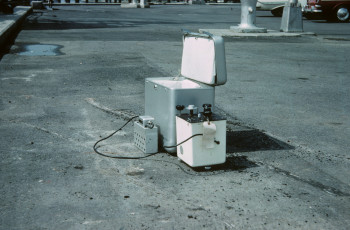If you’re tired of struggling to find the right tools for different tasks, then this article is for you. Today, we’ll explore the world of customizing cordless die grinder setups for specific tasks. With the right combination of accessories and adjustments, you can transform your cordless die grinder into a versatile tool that is ready to tackle any job. From polishing and grinding to cutting and shaping, we’ll show you how to create a personalized setup that will make your work easier and more efficient. So, grab your cordless die grinder and let’s get started on this exciting journey of customization.
Choosing the Right Cordless Die Grinder
When it comes to choosing the right cordless die grinder, there are several factors to consider. Understanding the power options available, evaluating the RPM (Revolutions Per Minute), and considering the ergonomics of the grinder are all essential in making an informed decision.
Understanding the power options available
Cordless die grinders come with various power options, typically ranging from 18V to 20V. The power output plays a crucial role in the grinder’s performance, as it determines the speed and torque it can deliver. Consider the type of tasks you will be performing and choose a power option that suits your needs. Higher voltage options provide more power, making them suitable for heavy-duty applications.
Considering the RPM (Revolutions Per Minute)
The RPM of a cordless die grinder is another vital aspect to consider. RPM refers to the number of revolutions the grinder makes in one minute. Different tasks require different RPMs. For instance, grinding metal may require higher RPMs, while precision grinding calls for lower RPMs. Understanding the RPM range of the die grinder and matching it to your specific tasks ensures optimal performance and desired results.
Evaluating the ergonomics of the grinder
The ergonomics of a cordless die grinder are essential for user comfort and control. Look for a grinder with a comfortable grip and well-designed handle. A lightweight and balanced grinder can reduce fatigue during extended use. Additionally, consider features such as a variable-speed trigger and an adjustable guard that allow for more versatility and ease of use. An ergonomically designed grinder ensures a pleasant grinding experience and enhances productivity.
Selection of Grinding Bits and Attachments
The selection of grinding bits and attachments is crucial for achieving desired results in various tasks. Understanding the different types of grinding bits, choosing the appropriate bit for the task at hand, and exploring specialized attachments for specific tasks are all important in maximizing the grinder’s potential.
Understanding the different types of grinding bits
Grinding bits come in a variety of shapes and sizes, each designed for specific applications. Some common types include cylindrical bits, cone-shaped bits, and disc-shaped bits. Cylindrical bits are well-suited for grinding flat surfaces, while cone-shaped bits are ideal for grinding curved edges and contours. Disc-shaped bits are versatile and can be used for both grinding and cutting. Understanding the characteristics and applications of each type of grinding bit ensures you select the right one for your task.
Choosing the appropriate bit for the task at hand
The task at hand will determine the type of grinding bit you need. For example, if you’re working on metal surfaces, a grinding bit with a coarse grit may be suitable for removing material quickly. On the other hand, if you’re looking for a smooth finish, a fine grit grinding bit will be more appropriate. Consider the material you’re working with, the desired outcome, and the level of precision required when choosing the right grinding bit for your task.
Exploring specialized attachments for specific tasks
In addition to grinding bits, there are specialized attachments available for cordless die grinders. These attachments expand the grinder’s capabilities and allow for more diverse applications. Some examples include wire brushes for rust and paint removal, cutting wheels for precise cuts, and sanding discs for smoothing surfaces. Exploring these specialized attachments opens up new possibilities and aids in accomplishing specific tasks effectively.

Optimizing Battery Life
Battery life is a crucial factor when using cordless die grinders. By selecting the right battery voltage and capacity, using energy-efficient grinding techniques, and implementing proper maintenance and care, you can optimize the battery life of your die grinder.
Selecting the right battery voltage and capacity
Choosing the appropriate battery voltage and capacity is essential for ensuring the optimal performance and longevity of your cordless die grinder. Higher voltage batteries generally provide more power and longer runtime, but they may add weight to the grinder. Consider the tasks you’ll be performing and choose a battery that balances power and runtime efficiently. Additionally, higher capacity batteries will allow for longer usage before needing a recharge.
Using energy-efficient grinding techniques
To maximize battery life, it is important to use energy-efficient grinding techniques. Avoid excessive pressure on the grinder, as this can drain the battery quickly. Instead, let the grinder’s RPM and the grinding bit do the work for you. Using smooth and controlled movements will not only extend battery life but also improve the quality of your work. Additionally, avoiding unnecessary idle time and turning off the grinder when not in use can further conserve battery power.
Implementing proper maintenance and care
Proper maintenance and care are essential for preserving the lifespan of your cordless die grinder’s battery. Regularly clean the grinder and remove any debris that may affect its performance. Keep the battery contacts clean and free from corrosion to ensure a solid connection. Follow the manufacturer’s instructions for charging and storing the battery to prevent any damage. By taking care of your grinder and its battery, you can optimize its lifespan and performance.
Enhancing Safety Measures
Safety should always be a top priority when using a cordless die grinder. Wearing appropriate personal protective equipment (PPE), securing the workpiece properly, and avoiding overheating are essential safety measures to implement.
Wearing appropriate personal protective equipment (PPE)
To ensure your safety while using a cordless die grinder, it is crucial to wear the appropriate personal protective equipment (PPE). This includes safety glasses or goggles to protect your eyes from flying debris, a dust mask to prevent inhalation of dust particles, and gloves to protect your hands from potential hazards. Depending on the task, additional PPE such as ear protection and a face shield may be necessary. Never underestimate the importance of PPE in minimizing the risk of injuries.
Securing the workpiece properly
Securing the workpiece properly is crucial to prevent it from slipping or moving during grinding. Use clamps or vices to secure the workpiece firmly in place, ensuring stability and accuracy. This not only enhances safety but also ensures consistent and precise grinding results. Never hold a workpiece by hand while grinding, as it can lead to accidents and injuries.
Avoiding overheating and preventing the risk of sparks
Overheating of the cordless die grinder can be dangerous and may lead to malfunctions or even accidents. Avoid prolonged continuous use that can cause the grinder to overheat. Take regular breaks to allow the grinder to cool down. Additionally, be cautious of the presence of flammable materials and prevent the risk of sparks by grinding away from combustible substances. Ensure a well-ventilated work area to dissipate any heat or sparks generated during grinding.

Grinding Metal and Weld Preparation
When it comes to grinding metal and weld preparation, understanding the characteristics of different metals, choosing the right grinding bit for metal surfaces, and preparing weld joints effectively are key considerations.
Understanding the characteristics of different metals
Different metals have varying characteristics when it comes to grinding. For example, steel is relatively softer and is more forgiving to grinding, while harder metals like stainless steel or titanium require specific grinding techniques and tools. Aluminum, on the other hand, tends to clog grinding bits quickly due to its softer nature. Understanding the properties of the metal you’re working with helps you select the appropriate grinding bit and employ the right techniques for efficient grinding.
Choosing the right grinding bit for metal surfaces
When grinding metal surfaces, the choice of grinding bit is crucial to achieve the desired results. For general metal grinding, a grinding bit with a medium to coarse grit is typically suitable. However, for more precise or intricate grinding tasks, a finer grit may be necessary to achieve a smooth and polished finish. Consider the material and the level of precision required when selecting the appropriate grinding bit for grinding metal surfaces effectively.
Preparing weld joints effectively
Proper preparation of weld joints is essential for successful welding. Before welding, it is important to remove any contaminants or impurities from the weld joint. This can be done by grinding the joint surfaces to create clean and smooth surfaces for better welding penetration. Choosing the right grinding bit with the appropriate shape and size for the weld joint ensures precise and effective preparation. By effectively preparing the weld joints, you can enhance the quality and durability of the weld.
Precision Grinding and Deburring
Precision grinding and deburring require specialized techniques and tools. Using precision grinding bits for accurate results, deburring sharp edges, and achieving fine finishes on various materials are key aspects to consider.
Using precision grinding bits for accurate results
When precision is paramount, using precision grinding bits is crucial. These bits are designed to provide precise and accurate grinding, making them suitable for tasks that demand intricate details and fine finishes. Precision grinding bits typically have a fine grit and a specific shape that allows for controlled material removal. Whether you’re working on metal, wood, or other materials, using precision grinding bits helps achieve accurate results and enhances the overall quality of your work.
Deburring sharp edges and removing burrs
Deburring is an important step in finishing your workpiece, as it removes sharp edges and burrs that may lead to injuries or affect the functionality of the product. Cordless die grinders equipped with deburring attachments or deburring grinding bits make this process quick and efficient. Whether you’re working with metal, plastic, or wood, deburring sharp edges and removing burrs ensures a smooth and safe finished product.
Achieving fine finishes on various materials
Cordless die grinders are versatile tools that can be used on a wide range of materials. When it comes to achieving fine finishes, the choice of grinding bit and technique play a crucial role. For instance, when working with wood, using a fine grit grinding bit and employing smooth and controlled movements can result in a polished and smooth surface. Experimenting with different grinding bits and techniques on various materials allows for customization and helps achieve the desired finish.

Sharpening and Shaping Tools
Cordless die grinders are valuable for sharpening and shaping tools. Selecting the appropriate grinding bit for tool sharpening, maintaining proper angles and bevels, and shaping and contouring tools as per requirements are key considerations.
Selecting the appropriate grinding bit for tool sharpening
Tool sharpening requires the use of specific grinding bits that are designed to handle the hardness and shape of different tools. For example, when sharpening drill bits, using a specialized drill bit grinding attachment or a grinding bit designed for drill bit sharpening ensures precise angles and sharp cutting edges. Similarly, for chisels, knives, or other tools, selecting the appropriate grinding bit and employing the proper technique ensures effective sharpening.
Maintaining proper angles and bevels
Maintaining proper angles and bevels is crucial when sharpening tools. Different tools require different angles and bevels to perform optimally. Using a cordless die grinder with a grinding bit suitable for creating and maintaining specific angles allows for accurate and consistent results. Whether you’re sharpening a chisel, a knife, or a woodworking tool, maintaining the proper angles and bevels ensures sharp and efficient cutting edges.
Shaping and contouring tools as per requirements
Aside from sharpening, cordless die grinders are also valuable for shaping and contouring tools. The choice of grinding bit and technique used can help achieve the desired shape or contour. Whether you’re modifying the shape of a woodworking tool or creating a custom profile on a metal tool, a cordless die grinder allows for precision and control. By effectively shaping and contouring tools, you can customize them to suit specific requirements and improve their functionality.
Working on Stone and Concrete Surfaces
Cordless die grinders are not limited to metalworking; they are also suitable for working on stone and concrete surfaces. Choosing specialized grinding bits suitable for stone and concrete, smoothing rough surfaces, and etching, engraving, or polishing stone and concrete are key aspects to consider.
Choosing specialized grinding bits suitable for stone and concrete
Working on stone and concrete surfaces requires specialized grinding bits that can handle the hardness and abrasive properties of these materials. Diamond grinding bits or carbide grinding bits are commonly used for these tasks. The choice of bit depends on the specific application, whether it’s grinding, smoothing, polishing, or etching. Selecting the appropriate grinding bit ensures efficient material removal and desired finishes on stone and concrete surfaces.
Smoothing rough surfaces and removing unevenness
Rough surfaces and unevenness on stone and concrete can greatly impact the appearance and functionality of a project. Cordless die grinders equipped with appropriate grinding bits can smooth rough surfaces and remove any unevenness effectively. Using a grinding bit with a coarse grit allows for quick material removal, while transitioning to finer grits helps achieve a smoother finish. By smoothing rough surfaces and removing unevenness, you can enhance the overall look and quality of your stone and concrete projects.
Etching, engraving, or polishing stone and concrete
Cordless die grinders can also be used for more intricate tasks on stone and concrete, such as etching, engraving, or polishing. Specialized grinding bits with fine grits and specific shapes are suitable for these applications. Etching and engraving bits allow for intricate designs and patterns, while polishing bits create a polished and glossy surface. Experimenting with different grinding bits and techniques opens up a world of possibilities when working on stone and concrete surfaces.
Customizing Grinding Speed and Control
Customizing grinding speed and control allows for more versatility and precision in various applications. Adjusting the RPM settings for different applications, using variable-speed cordless die grinders, and enhancing control through grip, and handle modifications are key considerations.
Adjusting the RPM settings for different applications
Different applications require different RPM settings to achieve optimal results. For example, higher RPMs may be necessary for tasks like metal grinding that require fast material removal. On the other hand, lower RPMs are ideal for precision grinding or polishing that demands control and finesse. Cordless die grinders with adjustable RPM settings allow for customization to specific applications, ensuring the best performance and desired outcomes.
Using variable-speed cordless die grinders
Variable-speed cordless die grinders offer greater control and flexibility in various tasks. By adjusting the speed of the grinder, you can tailor it to the specific material and application. Lower speeds are suitable for tasks that require precision and delicate handling, while higher speeds are more appropriate for tasks that require fast and efficient material removal. Having a variable-speed cordless die grinder in your arsenal allows for versatility and enhances your ability to tackle different projects effectively.
Enhancing control through grip and handle modifications
The grip and handle of a cordless die grinder greatly impact control and user comfort. Some grinders come with adjustable handles that can be rotated or repositioned, allowing for better ergonomics and ease of use in different working positions. Additionally, choosing a grinder with a comfortable and non-slip grip ensures a secure hold and reduces fatigue during long periods of use. Enhancing control through grip and handle modifications improves overall precision and productivity.
Innovative Applications and Techniques
Cordless die grinders present opportunities for innovative applications and techniques. Exploring unconventional uses of cordless die grinders, utilizing creative techniques for unique shaping and grinding, and experimenting with accessories and attachments can lead to new possibilities and outcomes.
Exploring unconventional uses of cordless die grinders
Cordless die grinders can be used for more than just traditional grinding tasks. They can be used for carving, sculpting, or even creating intricate designs on various materials. By thinking creatively and pushing the boundaries, you can discover unconventional uses for your cordless die grinder. Whether it’s adding artistic flair to a woodworking project or exploring new possibilities in metalworking, the versatility of cordless die grinders offers endless opportunities.
Utilizing creative techniques for unique shaping and grinding
Innovative shaping and grinding techniques can yield unique and exciting results. Experimenting with different grinding bit profiles, angles, and movements can create distinctive textures and patterns on various materials. You can explore techniques like plunge grinding, freehand grinding, or even using the edge of a grinding bit to create bevels or grooves. Getting creative with your cordless die grinder allows you to express your artistic vision and achieve one-of-a-kind finishes.
Experimenting with accessories and attachments for new possibilities
The use of accessories and attachments further expands the capabilities of cordless die grinders. From sanding drums to rotary brushes, the additional tools can be used to achieve different effects and finishes. Attachments like grinding guides or depth gauges can ensure consistency in shaping or grinding, while polishing pads can elevate the final finish. By experimenting with various accessories and attachments, you can unlock new possibilities and take your cordless die grinder to new heights.
In conclusion, choosing the right cordless die grinder involves understanding the power options available, considering the RPM, and evaluating the ergonomics. Selecting appropriate grinding bits, exploring specialized attachments, optimizing battery life, and enhancing safety measures are all essential for successful and efficient use. Furthermore, knowing how to tackle specific tasks like grinding metal, weld preparation, precision grinding, tool sharpening, working on stone and concrete surfaces, and customizing grinding speed and control allows for a broader range of applications. Lastly, embracing innovative applications, techniques, and accessories opens up new possibilities and allows for creative exploration with the cordless die grinder. By following these considerations and utilizing the full potential of a cordless die grinder, you can enhance your grinding experience and achieve excellent results in various tasks.



